



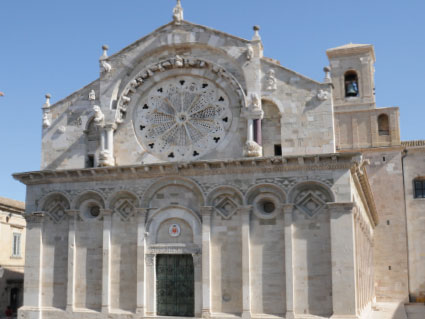
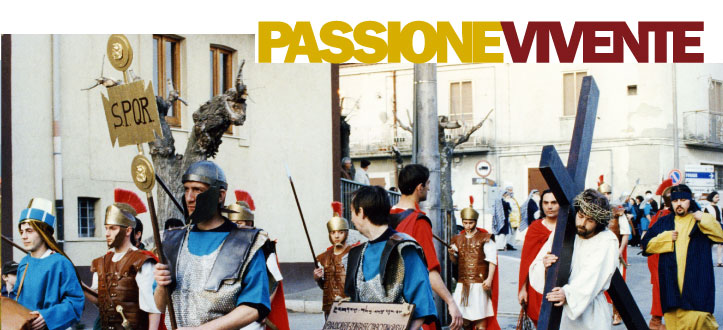
Hundreds of men, women and young people, dressed in period costumes, take part in the Sacred Representation of the Passion and Death of Jesus Christ. On the afternoon of Holy Saturday, this popular performance winds its way through the narrow little streets of the Historic Centre, coming to a close on the “Toppo San Giacomo” with the Crucifixion. The re-enactment is accompanied by huge crowds of people, creating an alluring, highly emotional atmosphere.
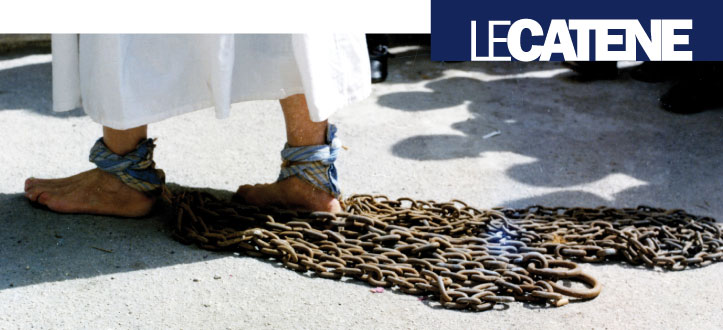
Instituted in all likelihood by the Bishop E.G. Cavalieri in the wake of a tragedy that occurred in 1702 and gave an awakening shock to the quiescent faith of the inhabitants of Troia, the Procession of the “Chains” sets out on the morning of Good Friday from the Church of Saint Basil the Great (11th century) and winds its way through the streets of the Historic Centre, visiting the “holy sepulchres” in the various churches.
The five penitents, dressed in a white hooded tunic, carry a heavy cross on their shoulders; they announce their arrival with the sinister sound of the heavy chains, tied to their bare feet, and with the dull, rhythmic sound of the trocchiola, which break the deeply mournful silence that reigns along the route.
In accordance with an ancient tradition, the penitents may not give up or interrupt the practice for five years, in honour of the five wounds of Christ.
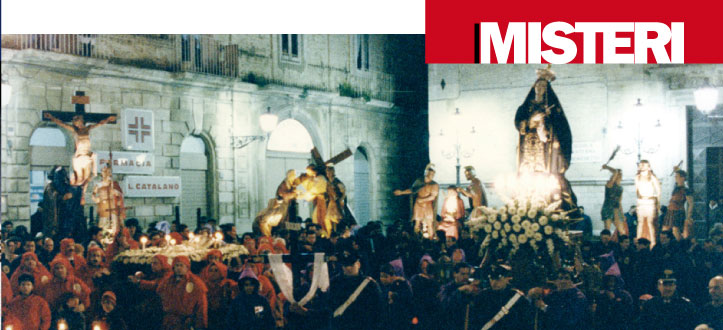
Towards evening on Good Friday, five groups of statues made in modern times (the 18th century papier mâché statues are conserved safely in the Diocesan Museum) set out from the Basilica-Cathedral and are carried in procession along the main streets of the town.
They represent, in order, the Capture, the Crowning with thorns, the Flagellation, the First Fall and the Crucifixion, or Calvary.
Behind the last group of statues is the beautiful papier mâché statue from the Neapolitan school depicting Christ Taken Down From The Cross, carried on the shoulders of the members of the Congrega del Santissimo (Congregation of the Most Holy Redeemer), preceded by the 18th century statue of Our Lady of Sorrows (by the sculptor G. Colombo), carried on the shoulders of the Congregation that bears Her name.
The procession is brought to a close by the “Chains”, figures dressed in violet and with their faces uncovered.
Before the Second Vatican Council, this procession was particularly spectacular and dramatic as a result of the sermons recited in a number of set places. The last of these, known as the “Torment of Our Lady” brought this paraliturgical service to a close, creating profound emotional tension among the faithful.
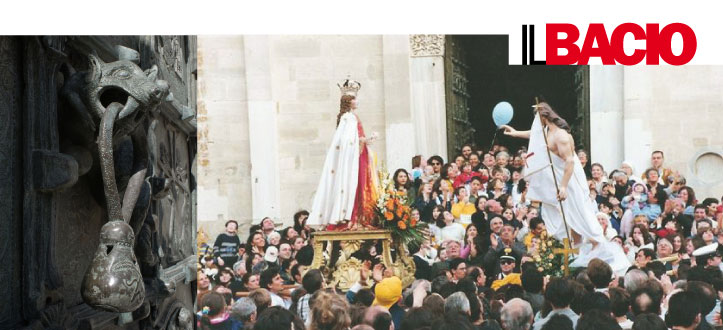
This procession takes place on the afternoon of Easter Sunday. The statue of Our Lady (perhaps by Pietro Frasa, who decorated the miraculous wooden cross), in mourning dress, sets out from the Church of Saint Dominic, while, from the other side of the town, the statue of Christ the Saviour leaves from the Church of Saint Francis.
The two effigies move towards the square in front of the Basilica-Cathedral, where the rite of the Kiss takes place. The two statues, amid the silence of the crowd, are brought slowly up close to one another and then drawn back; this movement is repeated a second time, then a third. On the third occasion, to thunderous applause, the statue of Christ the Saviour is lowered down for the Kiss right to the feet of the statue of the Virgin, while the municipal band plays a march taken from “Moses” by Gioacchino Rossini.
This popular ritual, the only one of its kind documented in Puglia, presents strikimg similarities with the rites that take place on Easter Sunday in Abruzzo; it may well derive directly from there, given the close relationships established between the two regions as a result of shepherds moving their flocks.